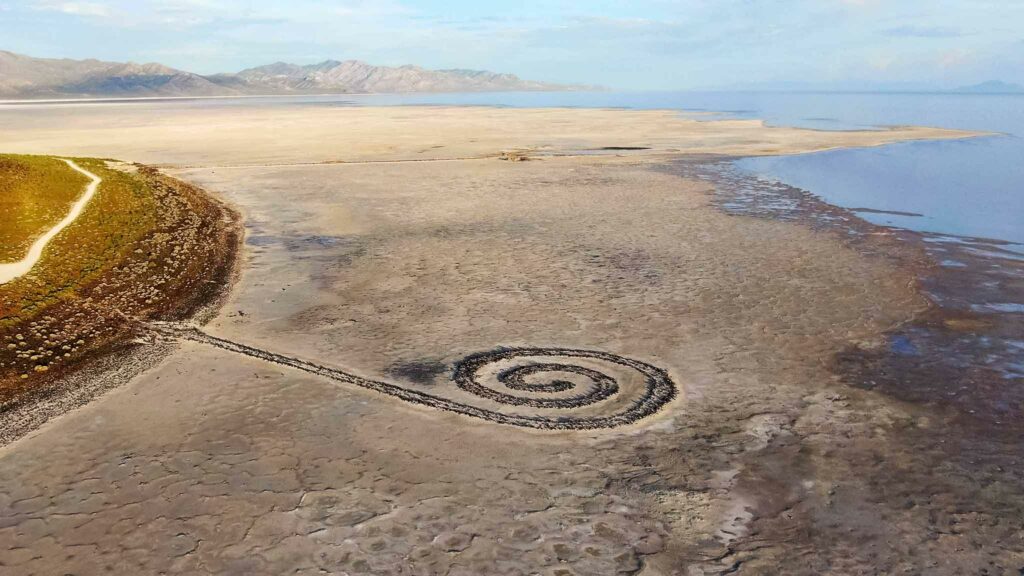When creating art about the environment, artists have an opportunity to deliver powerful messages and to even cause societal shifts in perspective. When done correctly, art like this can give a visceral understanding of how humanity is impacting the world.
In my opinion, when doing art like this, the artist has a key responsibility to demonstrate how humanity is interacting with nature while not causing damage of their own. For example, the Double Negative by Michael Heizer, a deep trench displacing nearly a quarter of a million tons of rock in Nevada caused deep, permanent scarring to the landscape. Similarly, Robert Smithson’s construction of the Spiral Jetty, in 1970 in the Great Salt Lake has also permanently changed the landscape (the lake bed around the Jetty is actually exposed now due to years of severe drought in Utah, possibly delivering an even more impactful message than the original piece). These pieces seem to more strongly show humanity’s power over nature rather than showing the need to coexist with it.

The pieces that stand out most strongly to me are the ones that demonstrate what humanity has done and what we can do to return to a more sustainable way of living with nature and not powering over it. One piece from Art & Ecology Now by Andrew Brown [2] that stood out to me most was Alan Sonfist’s Time Landscape. This took a section of New York city and attempted to return the landscape to how it looked in per-colonial times with native plants. This juxtaposition between the city and the natural landscape from which it arose is powerful and striking to me. It demonstrates the need to coexist with the environment and not to simply impose our will upon it. Another similar piece, by Patricia Johanson, the Fair Park Lagoon in Dallas, archives a similar goal. The creation of a functioning ecosystem within the park is another powerful demonstration of what humanity must achieve globally, but done on a small scale. These artworks stood out to me because they not only call out what damage humanity is doing to the planet, but also do so without harming the environment. These pieces even hint at ways in which people can, and should, live more sustainably. They show that sustainability with the environment does not have to be all sacrifices, but it can be beautiful too.
[1] Judah, Hettie. “Robert Smithson Review – Art With a Dose of Extreme Sports.” The Guardian, Guardian News and Media, 9 Dec. 2020, https://www.theguardian.com/artanddesign/2020/dec/09/robert-smithson-review-art-with-a-dose-of-extreme-sports.
[2] Brown, Andrew. “Introduction.” Art & Ecology Now, Thames & Hudson, New York, NY, 2014, pp. 6–15.

